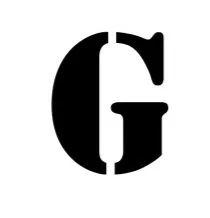Smoothness of Space
Noah Sadler
Foucault’s disciplinary societies reveal the means of organization over society. Disciplinary societies are an organization of vast spaces of enclosure. The individual never ceases, passing from one closed environment to another, each having its own system of control. Foucault explains this through the transitions from school to the barracks, to the factory, to the hospital. A transition of physical means between buildings, but also a metaphorical transition between structures of etiquette and customs. Each system is separate from each other and linked through chronological transition.
As we progress through these disciplinary societies, the advancement of technology uncovers these systems. This uncovering occurs through an increased access to information allowed by mainly the internet. The spread of knowledge and discourse increases the level of societal intellect; to maintain a level of control over society the method of control must shift. It must become less obvious to the subjects in their environment and hide itself to a point of unconsciousness within the individuals’ thoughts. In doing so the division between disciplinary societies is smoothed to become indistinguishable when one transitions from one environment to another.
The appearance of boundless, free information is the façade of a complex system of censorship and interference to maintain control. Baudrillard fears this in Simulation and Simulacra, simulation is the imitation of a process of reality while the simulacra is the state in which the imitation affects reality to a point in which it becomes indiscernible from reality itself. Disciplinary societies are transformed into these simulations that integrate themselves into what is now a state of simulacra in which our society runs on.
The physical appearance of these systems is transparent. It is defined by a lack of physical enclosure, in turn, a means of invisible containment. The Atrium is a manifestation of this smooth society, a means of openness within the bounds of enclosed space to give an appearance of an unregulated space. Reprogramming in the individuals’ environments to maintain a continuous hidden influence. An illusion of freedom hides the system of control. The Atrium appears to be a space programmed for nothing, a space open to endless possibilities of transition, a clean slate. Yet, the reality of the atrium points inwards, attracting the individuals towards a center enclosed by physical means of surrounding enclosure but also enclosed by a tailored simulation of exterior reality. Drawing eyes in to have every back face out.
